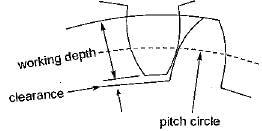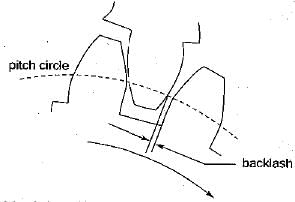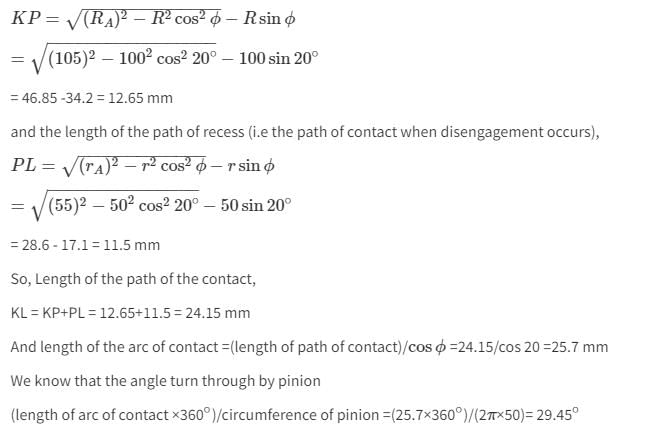Test: Toothed Gearing - 3 - Mechanical Engineering MCQ
20 Questions MCQ Test - Test: Toothed Gearing - 3
In the case of an involute toothed gear, involute starts from
When two spur gears having involute profiles on their teeth engaged, the line of action is tangential to the
For a cycloidal tooth profile, pressure angle at
I. Commencement of engagement
II. Pitch point and
III. At the end of engagement will be
The difference between addendum and dedendum is known as
The difference between space width and tooth thickness is
Ratio of pitch circle diameter in millimeters to the number of teeth is known as
In case of a gear pair with involute tooth profile, the pressure angle through out the contact is
Match List - I (Terms) with List - II (Definitions) and select the correct answer using the codes given below the lists:
List-I
A. Module
B. Addendum
C. Circular pitch
List-II
1. Radial distance of a tooth from the pitch circle to the top of the tooth
2. Radial distance of a tooth from the pitch circle to the bottom of the tooth
3. Distance on the circumference of the pitch circle from a point of one tooth to the corresponding point on the next tooth
4. Ratio of pitch circle diameter in mm to the number of teeth
Codes:
A B C
(a) 4 1 3
(b) 4 2 3
(c) 3 1 2
(d) 3 2 4
Which one of the following is the correct statement?
The consequence of a slight increase in the centre distance between two mating involute gears is that.
If an imaginary circle is drawn which- by pure rolling action gives the same motion as the actual gear, what is the circle called?
How does the contact ratio of helical gears compare with that of spur gears?
Match the items in columns I and II.
Column-I
P. Addendum
Q. Instantaneous center of velocity
R. Section modulus
S. Prime circle
Column-ll
1. Cam
2. Beam
3. Linkage
4. Gear
Tooth interference in an external involute spur gear pair can be reduced by
Two involute gears of 20° pressure angle are in mesh. The number of teeth on pinion is 20 and gear ratio is 2. If the module is 5 mm and pitch line speed is 1.2 m/s, (Assume addendum as standard and equal to one module). Then angle turned through the pinion when one pair of teeth is in mesh, will be
The arrangement is called bevel gearing, when two shafts are


















